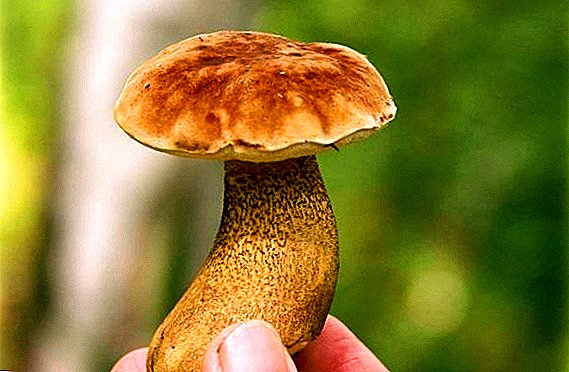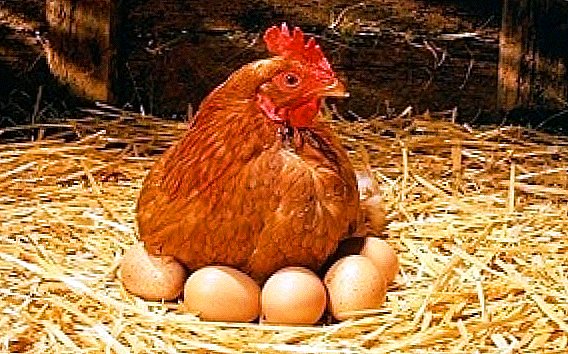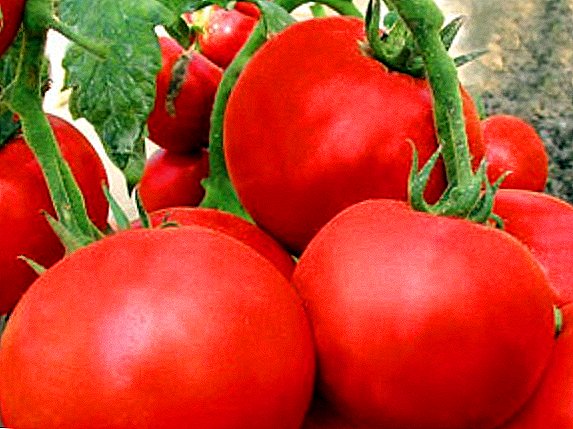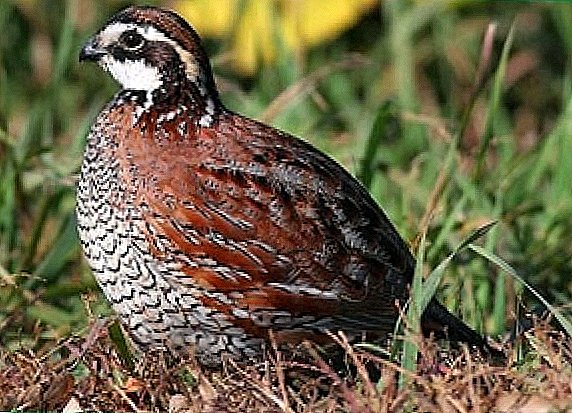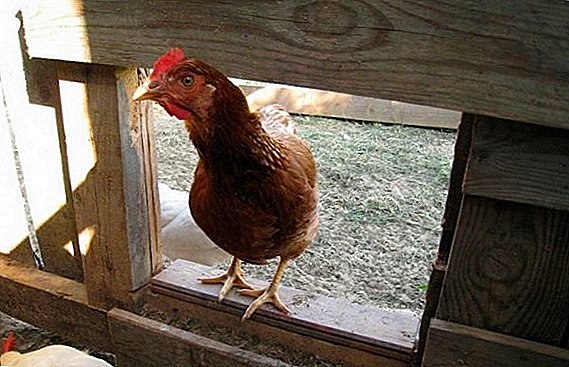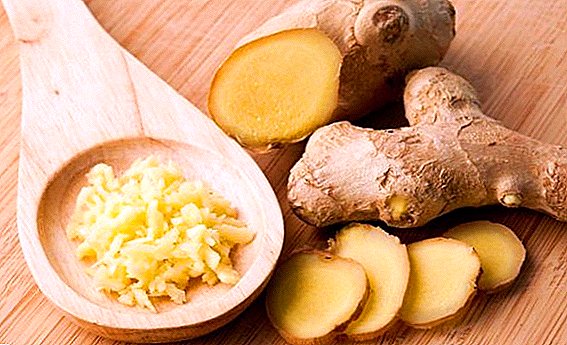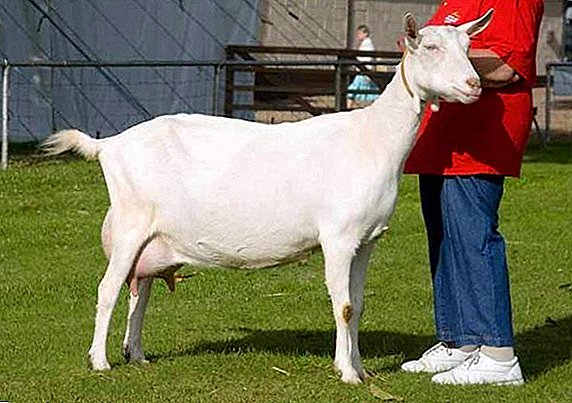 The most valuable representative of goats of high-dairy breed is the Swiss Zaanen, the birthplace of which is the town of Zaanen, located in the Alps. The animal differs from other goats by its high productivity, good fertility and excellent adaptability to the harsh climatic conditions. However, those who want to grow it should be familiar with the rules and characteristics of its content.
The most valuable representative of goats of high-dairy breed is the Swiss Zaanen, the birthplace of which is the town of Zaanen, located in the Alps. The animal differs from other goats by its high productivity, good fertility and excellent adaptability to the harsh climatic conditions. However, those who want to grow it should be familiar with the rules and characteristics of its content.
Saanen goats: breed description
Today, Swiss white goats are considered the best. Information about the exact origin of this breed is not, but scientists are inclined to the option of "national selection". For the first time, goats were seen at the end of the 19th century and soon became known in the territory of America, Australia, and European countries. 
Did you know? AT States of the former Soviet Union, the animal was introduced in 1905. It is noteworthy, but each country gave the goat its name, for example: white Germanic improved, American Zaanenskie, Dutch white, white shorthair, etc.
Purebred zaanensky goat is a strong, rather massive animal, whose height at the withers can reach a practical one meter, and the weight of a male can be up to 100 kg, and that of a female up to 90 kg. However, in most cases, live weight is 55 kg for goats, and up to 80 kg for goats.
Zaanenka has a pure white color with a silky shiny hair of small length. Distinguished breed strong, well-developed skeleton with straight legs with hooves, painted in yellow.
The head is rather large, with expressive beautiful, slightly "sad" eyes, the neck is flat and long, the muzzle is elongated, with a broad forehead and erect ears. Hanging ears are a fault and are considered a defect. All males have a large beard, with females it is almost invisible or completely absent. 
A special feature of the zaanenka is its large, symmetrical pear-shaped udder with well-developed nipples pointing forward. On the surface of the udder, some representatives of the breed have multiple black specks, this is not a defect.
Check out the best breeds of goats, Lamanchi goats, Alpine, Boer, Nubian.
By productivity, goats are the richest. The rate of milk yield will depend on the conditions of the animal and the diet. If we take into account the conditions of our state, then about 600-750 liters of milk a year will be given; under ideal conditions of maintenance, this figure doubles to 1,300 liters.
Did you know? A record milk yield was recorded in the goat’s homeland, and it was 2499 liters of milk per year.
Productivity Characteristics
Zaanenki highly valued for its high productivity, and its performance increases with the number of lambing. The maximum flowering of milk yield comes after the fourth childbirth, then the female can give 8-12 liters of milk per day, morning and evening. 
During lactation, the mass of milk can exceed the weight of the animal itself by 20-25 times. For comparison, in a cow, this coefficient does not exceed eight. Sexual maturity in females comes to 8-10 months. The lactation period lasts up to 11 months. Outrigger from a hundred goats - 180-250 kids, it is considered a satisfactory figure.
Goat milk is very tasty, moderately fat - up to 4%, thick, with a pleasant soft creamy taste, without the presence of a specific smell, which is inherent in products of other breeds.
Advantages and disadvantages
Breeders of purebred white goats mark a number of undoubted advantages and characterize them from the excellent side. 
And all thanks to:
- excellent productivity. Even after the first offspring, the female is able to produce at least half a ton of milk per year, and after the fourth lambout, the milk yield can double;
- long lactation periodwhich lasts for 10-11 months;
- excellent fertility. There are up to 250 heads of young stock per hundred females. In addition, goats grow rapidly and, as a result, quickly give the next offspring;
- fine taste of milk. Goat milk is a specific product and, because of its characteristic "goat" smell, often does not taste like adults or children. The goat milk of this breed does not have these drawbacks, it smells great and has an excellent taste;
- high fat milk - up to 4%, while in a cow - maximum up to 3.2%;
- Opportunities to eat meat of young animals from 3 to 5 months, after stopping their intensive growth;
- excellent adaptability to harsh climatic conditions;
- opportunities to graze the animal in places inaccessible to the cows, for example, in mountainous areas, ravines.

The main disadvantage of the breed is considered to be high demands on conditions of detention and regular care. Disruption of nutrition, temperature, dryness of the room leads to the fact that the productivity of goats falls. Also, some breeders to the minuses of the breed rank the rather large, sometimes even frightening dimensions of goats.
When buying young stock in our country, you may face the problem of the lack of purebred individuals with pedigree books. They can be purchased only from some breeders, and at a fairly high cost.
It will also be useful for you to learn about the features of lambing in goats, about the main diseases of goats, about the features of choosing goats, how to build a shed for goats, how many liters of milk a goat gives, how to choose a milking machine for goats.
Content
Saanenka is very demanding in its content, and bad conditions negatively affect its productivity. 
The main requirements for its content are:
- Microclimate in the room. Animals equally badly tolerate heat and cold. In winter, the temperature in the room should not fall below +7 degrees, in summer it is necessary to ensure that the indicator is not above + 19 degrees. The goat reacts negatively to high humidity, it is important that it does not exceed 75%.
- Fresh air. In the barn where animals live, care must be taken to create sufficient air ventilation, but at the same time ensure that there are no drafts.
- Purity. High demands are placed on room hygiene. Goats should be kept clean, and the litter should be changed immediately after it was contaminated. The stable is built away from cesspools, polluted ponds or reservoirs. It is recommended on both sides to arrange grooves for the removal of waste products of animals. Twice a year they disinfect the crib.
In addition, dairy goats should be kept in separate rooms up to 2 square meters. m, two females. Goats need to organize more space. 
Care and nutrition
The white goat's diet deserves special attention because it differs from the products needed by regular breeds.
Obligatory elements in the diet of animals should be:
- salt. It must be given constantly;
- legume-cereal grasses. Goats reluctantly use hay from different types of grass and prefer cereal or leguminous crops;
- bran;
- silage. Suitable for feeding in winter;
- vitamin and mineral supplements based on carrots, apples, potatoes, beets, cabbage.
Find out what goats eat, how to feed dairy goats, how to feed goats in winter.
In winter, experts recommend "treat" animals with besoms of lime or oak leaves, willow twigs.
Important! Do not feed goats with food debris from a person’s diet. This may affect, firstly, the volume of milk yield, and secondly, it can undermine health.

It is necessary to feed the animal with extremely warm, separated water up to two times a day, depending on the air temperature.
No less important is the external care of the animal, in particular, for wool.
To keep the coat smooth, shiny and healthy, the animal should be regularly walking:
- in summer - at least 5 hours a day;
- in winter - up to 2 hours.
Twice a year you need to carry out procedures for trimming the hoof. Walking is contraindicated in heavy snow, critical subzero temperatures and heat.
Breeding characteristics
Zaanenskoe goats, above all, are of great value in terms of high productivity. To acquire young goats and goat-producer should be from proven, reliable breeders. 
To get good offspring, you need a purebred goat, with a strong build and good health, who can fertilize up to fifty females. Before mating is done, the animals are fattened.
During one day, the goat can “cover” up to three females, and the interval between each mating should be at least 4 hours. If there is no adult goat in the farm, it is replaced with a young goat, but not younger than 8 months.
Important! The most productive is a goat age from 2 to 5 years. To young females and old goats allow the manufacturer of middle-aged. But to the middle-aged females you can admit goats of any age category.
The goats become sexually mature at 6-8 months, however it is recommended to carry out the mating not earlier than 1.5 years. A female's willingness to mate can be determined by her behavior: she becomes restless, loses her appetite and desire to graze, wags her tail, her genitals swell and turn red a little. 
In case of dissatisfaction with the physiological needs of the female, her sex hunt will be repeated several weeks later.
Pregnancy zaanenki lasts about 6 months. For the upcoming lambing, you should prepare a separate cozy room without drafts, in which the walls are bleached and a new bedding is installed. The process of the birth of kids in a healthy animal takes place without human intervention, approximately 40-50 minutes.
15 minutes after giving birth to one kid, a second one is born. Boys weigh an average of 4.5 kg, girls - up to 3 kg. In newborns, the umbilical cord is carefully cut off at a distance of 8 cm from the abdomen; a special solution from the eyes, mouth and nostrils removes mucus.
Did you know? In more than 80% of cases goats give birth to twins.
Where to buy zaanensky goat
Today it is quite difficult to buy a purebred goat in our country. The ideal option is to buy from the breeding plants. However, for many who want this option is not available. 
You can choose an animal from private farmers, but for this you need to consider several aspects:
- perfect white wool. The presence of spots or different shades of wool indicates that there is a half-breed in front of you. You also need to pay attention to the state of the coat - it should be short, smooth and shiny;
- straight spine. A rough, humped back is not a feature of the Zaanen breed, and over time it will not even out, as the dishonest vendors claim;
- height at withers - not less than 75 cm. Low growth of an adult animal may indicate that during its cultivation the relevant technologies were not respected. This fact does not mean that the breed has changed, just hope for good milk yield in such cases is not worth it;
- no peculiar smell of milk. Zaanenki milk is not only very tasty, but also has a pleasant smell. The presence of "goat" shades - the result of improper care, in particular, the content in one stall of goats and goats, because the latter are the sources of an unpleasant smell.

Also, experts do not advise to buy goats after the fourth lambing, as their productivity decreases.
Certainly, it is possible to distinguish an ordinary goat from a zaanenka if there is at least a minimal breeding experience. Therefore, if you do not possess one, use the help of a professional.
Zaanensky goats are amazing animals that will delight with excellent productivity, good fertility and extremely tasty, healthy milk. They are playful, gentle and affectionate, sometimes capricious and stubborn, however, they will thank their owners for quite weighty rations for diligent care and a varied diet.


